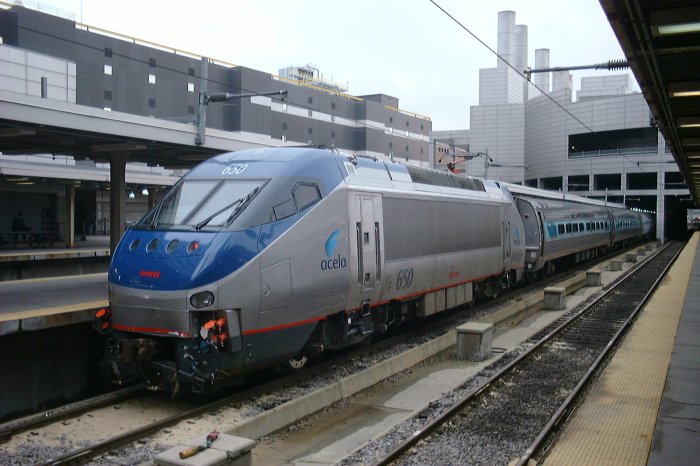We all know that the MBTA needs a little TLC when those famous New England winters come around—especially after the apocalyptic winter we had last year.
But what about in the hot, muggy days of summer? Even without the hurdles of snow and ice, riders might be surprised to learn that the warmer seasons bring their own unique challenges to America’s oldest subway system. Winter’s extreme cold can snap rails. In summer, high temperatures can cause a potentially dangerous condition known as “spaghetti rail,” spokesperson Jason Johnson explained.
Only it’s not nearly as delicious as it sounds.
“[Just] as extreme cold may cause rail to contract and pull apart at the joints—or completely break—extreme heat may cause the opposite, with expansion causing the rail to grow and, in some cases, resulting with a kink,” Johnson said. At their worst, a kink in the rails could derail a train, but the agency works hard to make sure that doesn’t happen, he said. Rails are closely monitored during periods of extreme heat and maintenance teams have a “few options” to repair or mitigate the issue. Heat can also cause increased friction on the rail, which means crews must take care to increase the frequency of their rail oilings, and even apply water to keep the rails cool as the sun bears down. Maintaining the air conditioning and HVAC systems on the system’s hundreds of subway cars each year is no small feat either: cars are inspected and tested before the air conditioning is activated while the vehicle is in service. Cars are also subject to regular inspections at after every 7,500 miles of service. Those systems are also monitored to ensure the air conditioners continue to work in the field, and, if not, are taken out of service to address the problem. The agency says it keeps spare systems on hand in order to swap out those systems that may need a closer look. That methods keeps cars off the tracks for as short as possible, while ensuring a comfortable temperature for riders—and one that can often be essential for the safety of seniors and those with certain disabilities, Johnson said. The most visible of all these preparations are, of course, the nearly 300 platform fans the transit agency places throughout the system to cool — and tousle the hair of — its commuters, Johnson explained. The fans, which are stored en masse at the MBTA’s facility in Charlestown, are first inspected and turned on in mid-May, usually when the weather starts to produce consecutive days of 75-degree or higher temperatures. The agency’s policy dictates that the fans should be turned on from 7 a.m. to 9 p.m. on days when temperatures of 90 degrees or higher are expected.
The system also employs 149 emergency ventilation exhaust fans that are also good at sucking the heat out of the, at times, sweltering subway stations.
Crews continue to work on elements of the Worcester/Framingham commuter rail line, which is sometimes subject to “heat orders” that limit train speeds to 30 miles per hour in some stretches of track. Work to improve the tracks started in 2014 and continues through this year, according to the agency.


















